If you want to turn your garden into a fluttering paradise for butterflies, milkweed plants are an essential addition. Beloved by monarchs and other pollinators, milkweed provides both nectar for adult butterflies and vital host plants for their caterpillars. With their bold blooms and easy-care nature, these plants not only support local ecosystems but also brighten up garden beds and wildflower areas. Here are 8 beautiful milkweed varieties that will attract butterflies while adding color and life to your outdoor spaces.
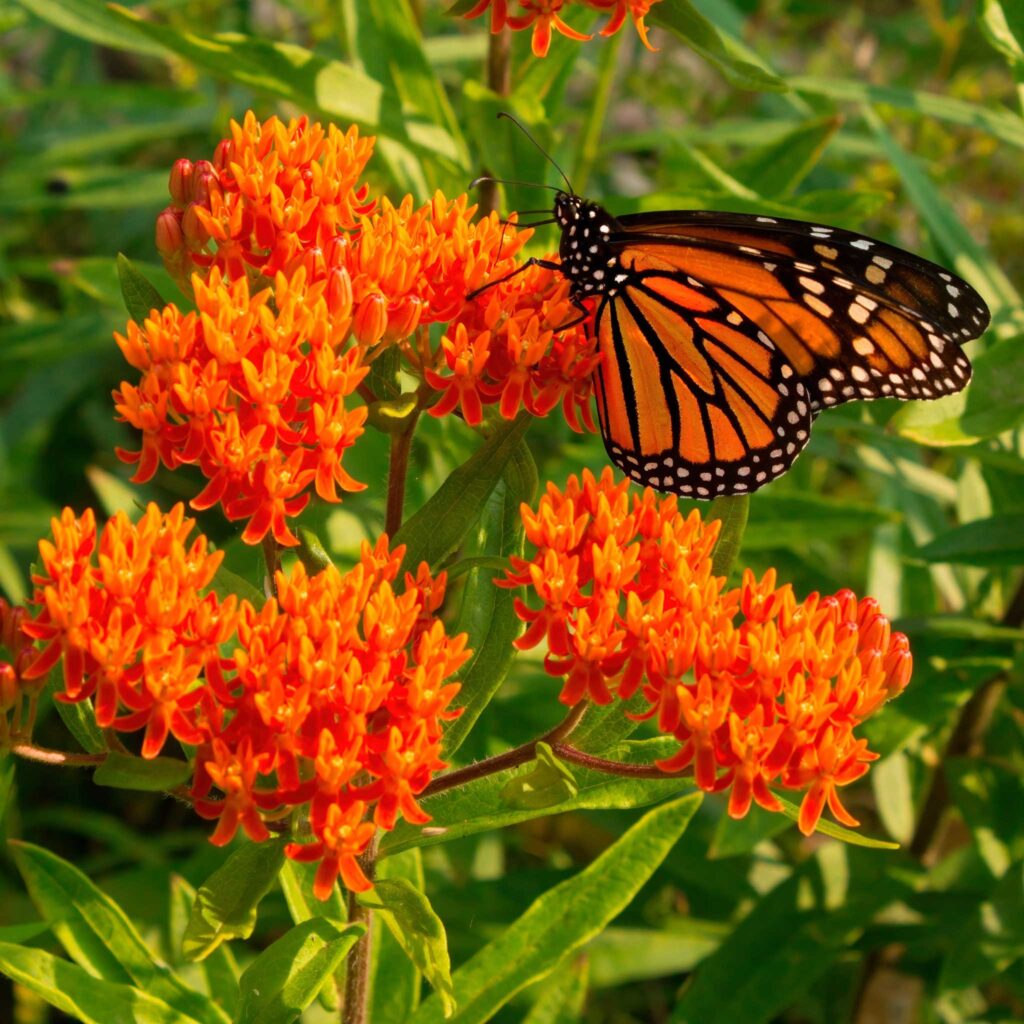
1. Asclepias tuberosa (Butterfly Weed)
Butterfly Weed is one of the most popular milkweed species for gardens. Its bright orange, cluster-shaped blooms are irresistible to butterflies, especially monarchs and swallowtails. This drought-tolerant, native perennial thrives in full sun and well-drained soil. It grows about 2-3 feet tall and is perfect for wildflower meadows, pollinator gardens, or sunny borders. Beyond its butterfly appeal, it also attracts bees and hummingbirds, making it a multi-purpose plant for supporting beneficial wildlife.

2. Asclepias syriaca (Common Milkweed)
Known as Common Milkweed, this tall, hardy native plant is a monarch butterfly favorite. It produces large, round clusters of fragrant pinkish-purple flowers in mid-summer, followed by distinctive seed pods. Reaching heights of 3-5 feet, it’s perfect for larger garden spaces, meadows, or naturalized areas. Common Milkweed spreads through rhizomes and seed, creating thriving patches that caterpillars love to munch on. It’s an easy-to-grow, low-maintenance plant that plays a crucial role in monarch conservation efforts.
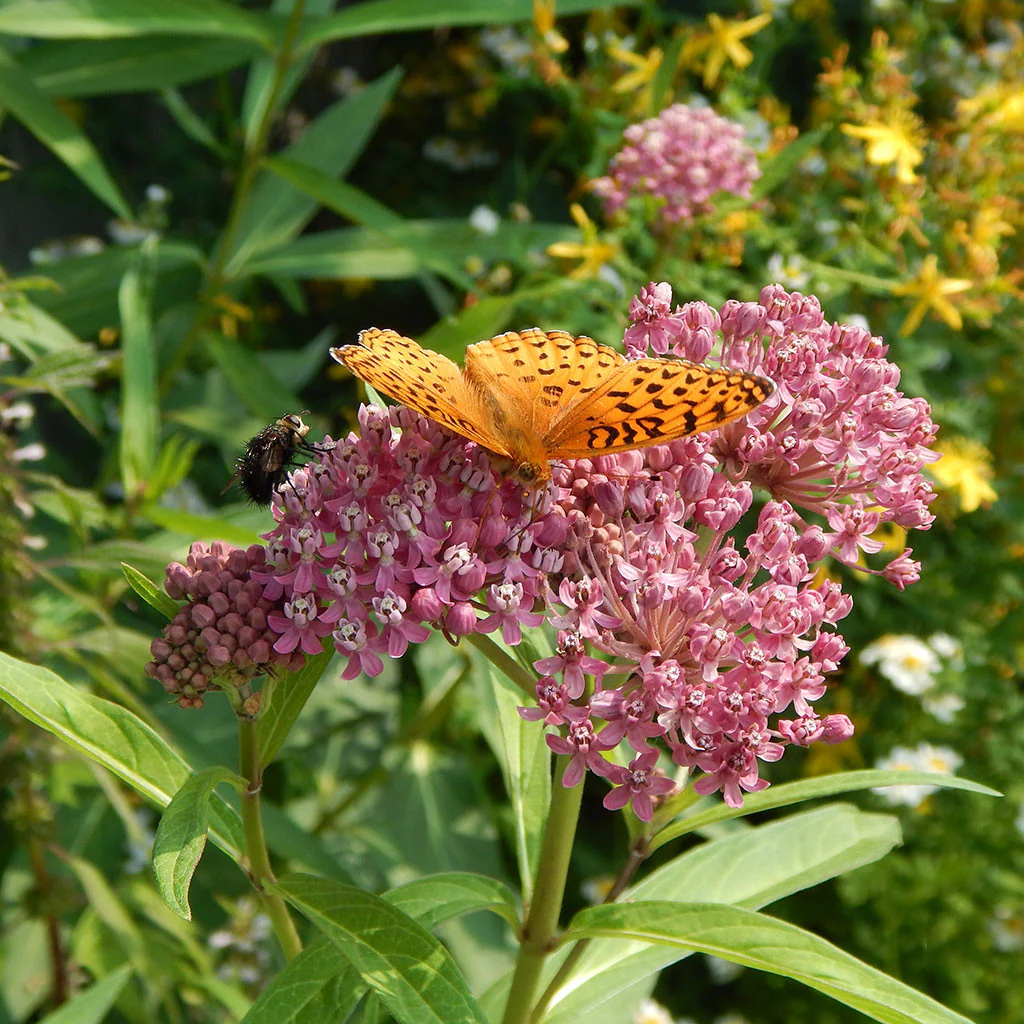
3. Asclepias incarnata (Swamp Milkweed)
Swamp Milkweed offers a more refined, garden-friendly look with its upright habit and clusters of pink to mauve flowers. Despite its name, it adapts well to regular garden soil if kept consistently moist. Growing 3-4 feet tall, it’s ideal for rain gardens, pond edges, and pollinator beds. Monarch caterpillars flock to its leaves, while adult butterflies, bees, and hummingbirds are drawn to its nectar-rich blooms. Its pleasant fragrance and narrow leaves make it a favorite in ornamental and wildlife gardens alike.
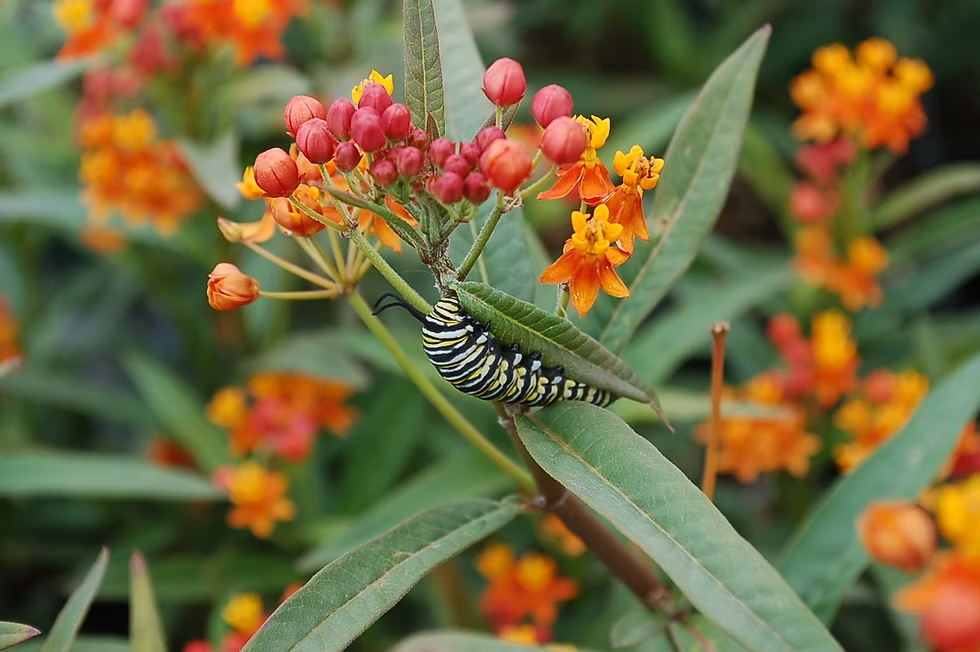
4. Asclepias curassavica (Tropical Milkweed)
Also called Scarlet Milkweed or Bloodflower, this tropical variety sports striking red and yellow bi-colored flowers. It’s a popular annual in cooler climates but behaves as a perennial in frost-free areas. Reaching 2-3 feet in height, Tropical Milkweed is a magnet for monarchs and other nectar-loving butterflies. While it’s highly attractive, it’s best managed carefully, as in warm regions it can disrupt monarch migration patterns. Regular pruning and seasonal planting keep it butterfly-safe and garden-beautiful.
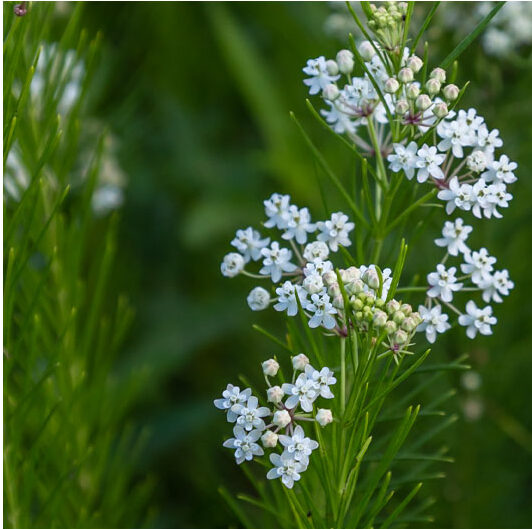
5. Asclepias verticillata (Whorled Milkweed)
For a delicate, graceful look, Whorled Milkweed offers slender, needle-like leaves and small, white to greenish-white flower clusters. It’s one of the later-blooming milkweed species, extending butterfly-friendly nectar availability into late summer and fall. This drought-tolerant, sun-loving perennial grows about 1-3 feet tall and is ideal for naturalized areas, dry meadows, and prairie gardens. Monarch caterpillars readily feed on its leaves, while its understated flowers attract a steady stream of pollinators.

6. Asclepias asperula (Antelope Horns Milkweed)
Native to the southwestern U.S., Antelope Horns Milkweed earns its name from the curved, horn-like shape of its seed pods. Its unique, greenish-white flowers with purple highlights are highly attractive to monarchs and queen butterflies. It thrives in dry, sandy, or rocky soils and loves full sun. Typically growing 1-2 feet tall, it makes a great addition to xeriscapes, native gardens, and butterfly habitats. This tough, drought-resistant plant adds texture and pollinator interest to any landscape.
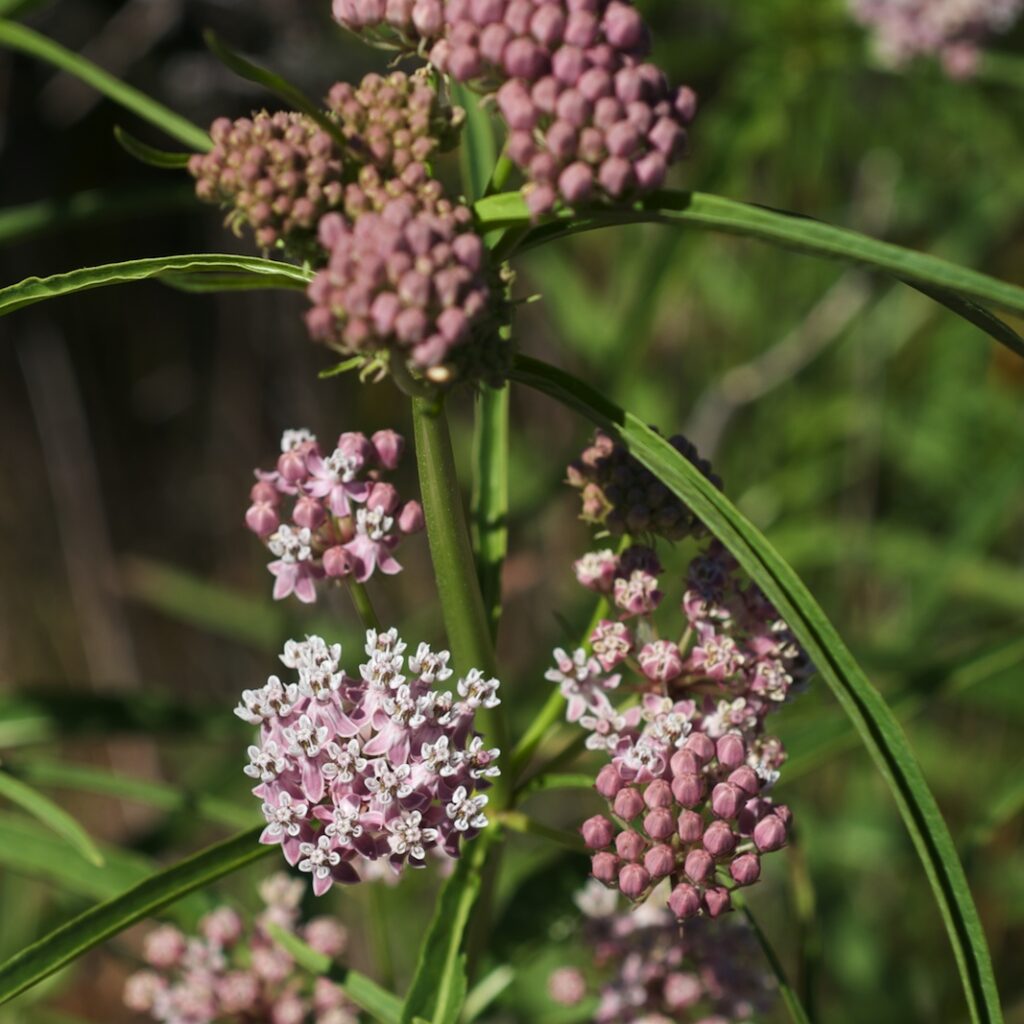
7. Asclepias fascicularis (Narrowleaf Milkweed)
Narrowleaf Milkweed is a California native with slender leaves and clusters of pale pink to lavender flowers. This easy-care perennial reaches 2-4 feet tall and adapts well to dry, sunny sites. Monarchs frequently lay their eggs on its narrow foliage, and its nectar-rich blooms feed a variety of butterfly species. It’s perfect for low-water gardens, native plant landscapes, and wildflower meadows. Its long bloom season and easy-growing nature make it a must-have for butterfly-friendly gardens in dry climates.
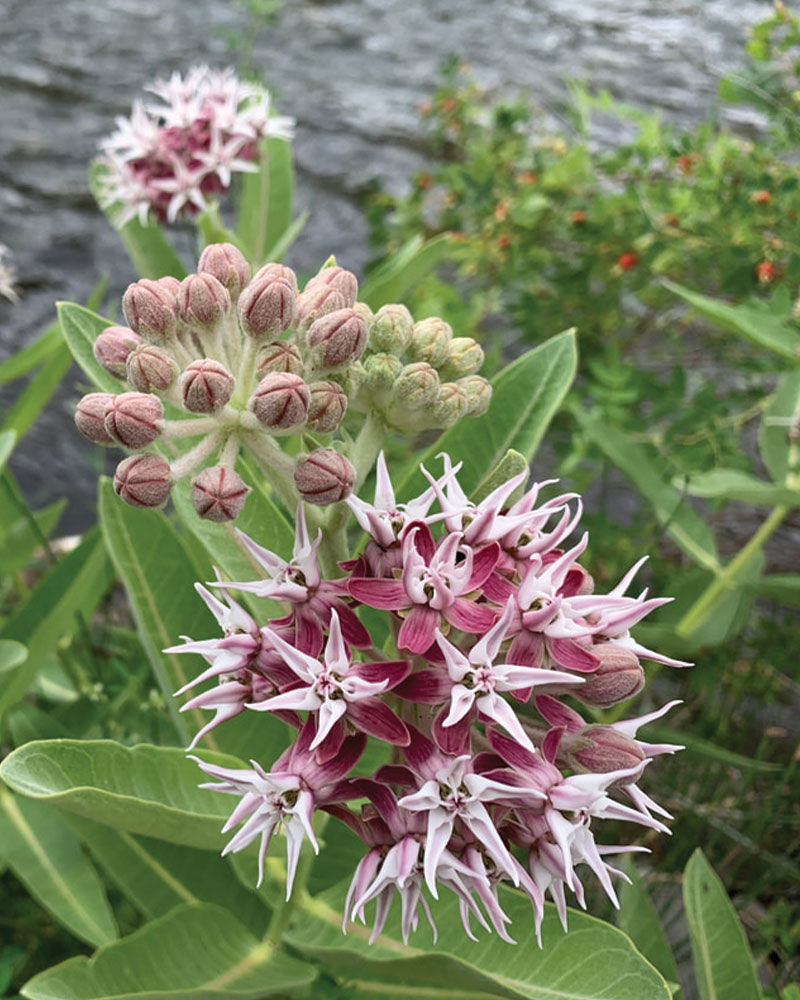
8. Asclepias speciosa (Showy Milkweed)
As its name suggests, Showy Milkweed delivers eye-catching beauty with large, star-shaped pink and white flowers. This robust perennial reaches heights of 3-4 feet and spreads through underground rhizomes, making it a great candidate for naturalized butterfly habitats. Monarch caterpillars eagerly feast on its broad, velvety leaves. Its blooms are sweetly fragrant, drawing a wide range of pollinators to the garden. It thrives in full sun and tolerates dry to moderately moist soils, adding both ornamental appeal and ecological value.
Final Thoughts
Adding milkweed plants to your garden is one of the easiest and most rewarding ways to support declining butterfly populations — especially the monarch. With so many beautiful and adaptable varieties, there’s a milkweed for every garden style, whether you prefer wild, naturalized meadows or tidy, formal beds. Plant a mix of these 8 butterfly-friendly milkweeds, and watch your garden fill with fluttering wings, vibrant flowers, and the joyful hum of pollinators all season long.

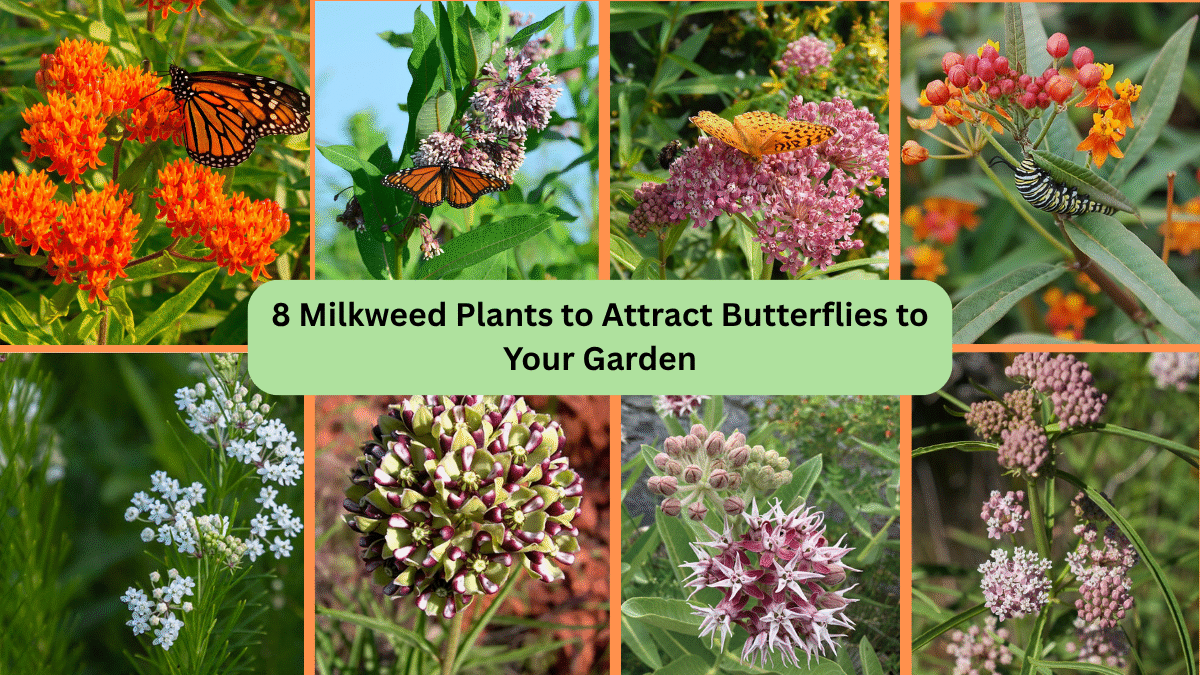



Leave A Comment